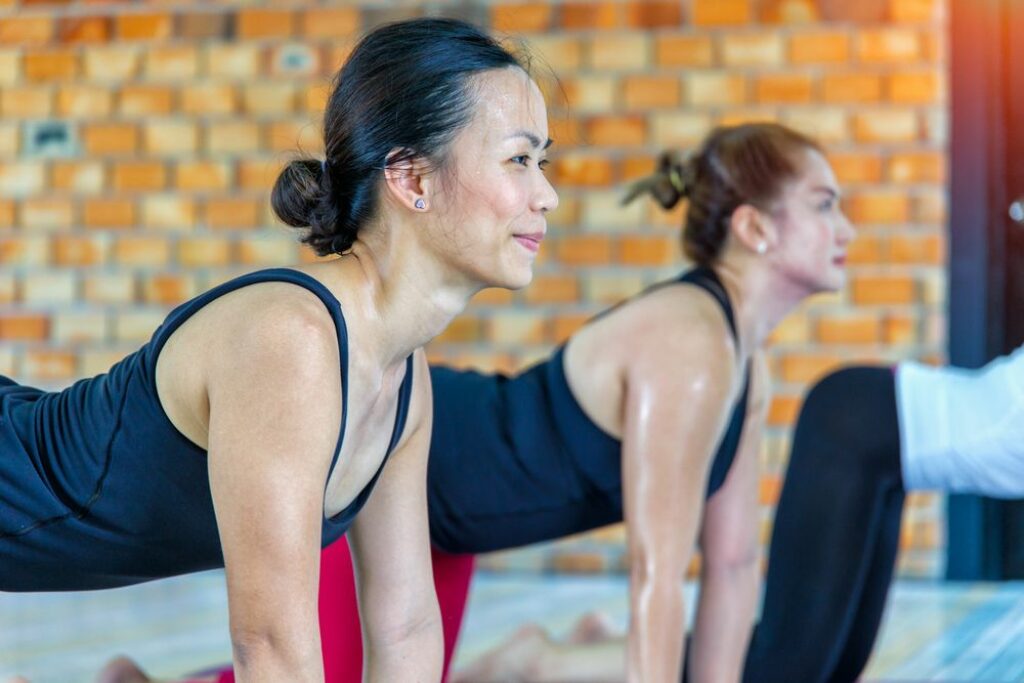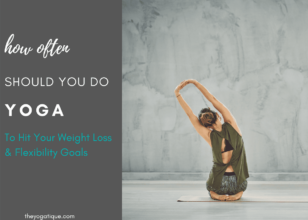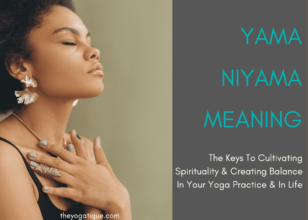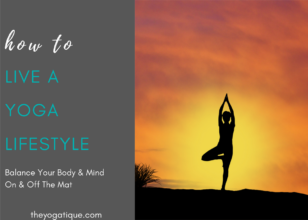You might have heard of the many ways a hot yoga temperature can enhance your yoga practice. It can give you greater flexibility, improve your heart health, burn more calories, all while improving your circulation. Who would say no to that?! Not me, even though it’s definitely more intense than traditional yoga, no doubt. If you are looking for a new challenge, just like I was when I first tried it, hot yoga might be it.
But before jumping in, I suggest you take a few minutes to inform yourself about how to prepare and which hot yoga style to choose, depending on your sensitivity, fitness, and health.
As a certified yoga teacher, I love informing yogis on the facts about the various styles of yoga. And in this article, we’ll explore what you can expect in terms of walking into studios that advertise hot yoga temperature classes and who this steamy style of yoga is best suited for
Article content:
(Click any link below to jump directly to section)

THE YOGA TEACHER TRAINING
YOU'VE BEEN LOOKING FOR.
Online Yoga Teacher Training Offers
- Affordability
- Flexibility
- Certification
- Lifetime access
⬇Click below to discover the best Yoga Alliance registered online yoga certifications enrolling now⬇
Is practicing hot yoga safe?
Hot yoga is generally considered safe, but even so, I would suggest that you consult your doctor before trying it out. I’ve seen people experience dizziness, lightheadedness, and difficulty breathing, which is probably not that good for you.
Who shouldn’t experiment with hot yoga (contraindications)
While hot yoga offers numerous benefits, such as increased flexibility and detoxification, it is important to be aware of its contraindications to ensure a safe practice. If you have any of the following conditions, you should be aware that hot yoga might not be best suited for you:
- Pregnant
- Diabetic
- Have a heart condition or any cardiovascular problems, including high blood pressure
- Asthmatics because heat can worsen the condition
- You have previous heat injuries or heat intolerance
If you don’t have any of the medical problems listed above, you should be safe.
How hot are hot yoga classes? (in Celsius & Fahrenheit)
Hot yoga classes are between 90 – 108 degrees Fahrenheit, which is 32 to 42 degrees Celsius.
There are also varying levels of humidity between 40-60% at different studios.
Are you sweating yet?!
Hot yoga vs heated yoga
The difference between hot yoga and heated yoga is that hot yoga classes are well, hotter! The room temperatures for hot yoga and heated yoga classes are:
- Hot yoga classes: 90° – 108°F (29.4°C – 37.7°C)
- Heated yoga classes: 80°- 85°F (26.6°- 29.4°C)
Heated yoga classes are not as hot and have a lower humidity level (below 40%). You can still loosen your muscles, perform deeper stretches, and detoxify your body in heated classes.
Before trying a hot yoga class, I prepared myself by trying a heated yoga class to see how I would react, especially because I don’t respond well to heat. If you are anything like me, I suggest you do the same.
Benefits and precautions of hot yoga
The following table provides a broad overview of hot yoga's key benefits and necessary precautions.
| Benefits of Hot Yoga | Precautions and Considerations |
|---|---|
| Improved Flexibility | Risk of Dehydration |
| Enhanced Calorie Burn | Not Recommended for Pregnant Women |
| Better Circulation | Caution for Individuals with Heart Conditions |
| Improved Heart Health | Monitor for Signs of Heat Exhaustion |
How to survive a hot or warm yoga class
In general, the rule of thumb for “surviving” a yoga class in a hot room is to hydrate enough during the class, as well as before and after.
Although this style is great for weight loss, flexibility, and endurance, dehydration can lead to problems with blood pressure, heart rate, and body temperature.
I don’t want to freak you out, but you can end up feeling weak, disoriented, or even have a heat stroke. Not ideal. So hydrate, hydrate, hydrate!
Just like when practicing any other style of yoga, we should listen to our bodies. So, if you notice that the discomfort is too much for you, don’t push it. Give yourself a break, or stop.
There's no shame in listening to yourself. That might be the greatest lesson you will get from the class.
What to wear to hot yoga
Since you’ll be sweating profusely, wear materials that absorb sweat, dry quickly, and feel nonrestrictive. Moisture-wicking fabric or spandex are great choices for these sticky studios!
Avoid clothes with 100% cotton because they will not dry quickly. As a result, your clothing will feel heavier.
Basically, any material you would wear to any other sports activity where you sweat a lot will do great here too. Many men go shirtless to a warm yoga class, while women just wear sports bras.

As for shoes, don’t wear any. Just like with any other yoga style, we typically do this barefoot. Of course, if you have any contagious foot conditions, such as fungus, please wear socks.
I suggest that you bring your own yoga mat since it doesn’t seem too appealing to use the studio’s mats in a class where everyone sweats so much. Ew!
And, of course, a towel and a water bottle are a must.
Takeaway on the temperature of hot yoga classes
There you have it, hot yoga temperature can vary depending on whether it's heated or hot. My advice is to not jump the gun. First, listen to your body and words of caution from your health provider. And with these covered, you are in for a real treat!
Some online yoga studios, online yoga teacher training programs, and brands that we write about may offer us a small percentage should you decide to purchase after reading our content. Thank you for enabling us to exist!









